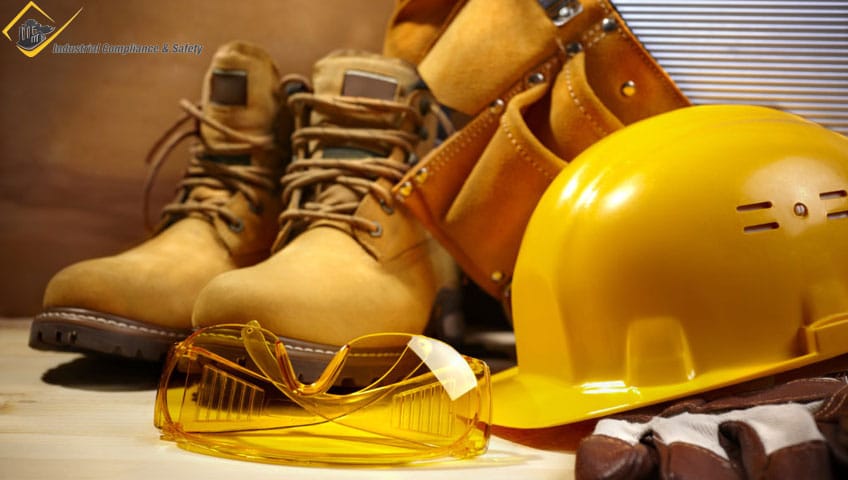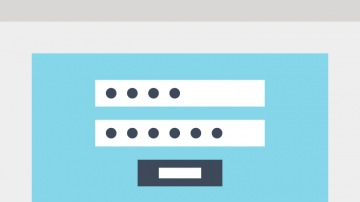The beauty of freshly fallen snow often paints a picturesque winter scene, but behind the scenes, dedicated snow removal crews work tirelessly to keep our roads, sidewalks, and communities safe during the frosty months. As the first responders to winter's icy embrace, these unsung heroes face unique risks and challenges. In this blog post, we discuss the importance of safety in snow removal operations. From navigating treacherous roadways to managing heavy equipment in sub-zero temperatures, the hazards they encounter are numerous. To ensure the well-being of both crew members and the communities they serve, compliance with safety regulations is paramount. Let’s explore the role of safety compliance in keeping our winter roads safe and sound.
Winter Weather Safety
Snow removal crews are on the front lines when winter unleashes its fury. They face a slew of hazards brought on by harsh weather conditions. Freezing temperatures, icy winds, and reduced visibility are just a few of the challenges these crews must contend with.
Winter weather safety measures are not just a matter of comfort; they can be a matter of life and death. It's crucial for snow removal crew members to be adequately prepared for the frigid conditions they'll face.
Proper clothing and equipment play a pivotal role in ensuring their safety and well-being. Insulated clothing, waterproof gear, and cold-resistant gloves are essential. Additionally, ensuring that vehicles and equipment are winter-ready with appropriate tires and heating systems can make a significant difference. By addressing these aspects, snow removal crews can better protect themselves against the relentless forces of winter.
Snow Removal Crew Training
The significance of adequate training for snow removal crews cannot be overstated. In a field where the stakes are high and the margin for error is low, preparation is key. Properly trained snow removal crews are not only more effective but also significantly safer.
Ongoing Safety Training Programs
Continual education and skill development are cornerstones of success in the snow removal industry. Regular safety training programs keep crews up-to-date with the latest safety practices, equipment operation, and emergency response procedures. These programs empower crews to make informed decisions during the most challenging winter conditions.
Training Topics Specific to Snow Removal
Snow removal training encompasses a broad spectrum of topics. These can range from understanding different types of snow and ice to proper snow plow operation, road salt application techniques, and handling emergencies such as accidents or vehicle breakdowns in extreme weather. It's important that crews are well-versed in these subjects to ensure efficient and safe snow removal operations.
Snow Removal Crew PPE
Personal Protective Equipment (PPE) is the last line of defense for snow removal crews, and every snow removal contractor should ensure their crews have the appropriate safety gear.
- PPE Essentials: Snow removal crews should be equipped with a range of PPE. This typically includes insulated, waterproof clothing to protect against cold and wet conditions. Additionally, crew members should wear non-slip, insulated boots, gloves, and headgear to shield themselves from falling snow and icy winds.
- Eye Protection: Snow removal often involves the use of equipment that can kick up debris. Safety glasses or goggles are crucial to safeguard eyes from flying particles, especially during snow blowing or plowing operations.
- Respiratory Protection: In situations where snow removal may generate fine airborne particles, such as dust from de-icing materials, respiratory protection becomes necessary. N95 masks or respirators can help filter out harmful substances.
- Proper PPE Usage: It's not enough to merely provide PPE; proper usage is key. Crew members should be trained to inspect their gear regularly for damage and ensure it fits correctly. PPE should always be worn as intended, even during seemingly routine tasks.
Snow Removal Equipment Safety
Effective snow removal heavily relies on well-maintained equipment. Neglecting this aspect can lead to breakdowns, delays, and safety hazards.
Maintenance Matters: Snow removal equipment, including plows, blowers, and salt spreaders, must be regularly maintained. This means everything from checking hydraulic systems to ensuring proper tire pressure. Maintaining equipment ensures it functions as expected, reducing the risk of accidents caused by equipment failures.
Safety Checks: Before every operation, conduct thorough safety checks on all equipment. Ensure that all safety features, such as warning lights and backup alarms, are in working order. Remove any debris or ice buildup that could affect equipment performance. Encourage operators to report any issues promptly to prevent accidents during operation.
Regulatory Compliance: Understand and comply with local and national regulations governing snow removal equipment. These regulations may cover vehicle weight limits, lighting requirements, and environmental considerations like salt usage. Compliance not only avoids legal issues but also contributes to overall safety.
Snow Clearing Best Practices
Effective and safe snow clearing is the cornerstone of a successful snow removal operation. Here are some best practices to keep in mind:
- Route Planning: Before heading out, planning your snow-clearing routes is essential. This involves identifying priority areas, such as main roads, emergency access points, and high-traffic areas. Efficient route planning not only saves time and resources but also ensures that critical locations are cleared promptly.
- Snow Plowing Techniques: Snow plowing requires skill and precision. Operators should be trained in proper plowing techniques to minimize the risk of accidents and damage. This includes angling plow blades correctly and avoiding sudden starts and stops.
- Safety Precautions: Safety should always be a top priority during snow clearing. Crew members should be well-versed in operating snow removal equipment safely. This includes understanding the equipment's blind spots and staying vigilant for pedestrians or other obstacles.
- Clearing Sidewalks and Entrances: Don't forget about sidewalks and entrances. Clearing pathways for pedestrians and ensuring entrances to buildings are accessible is vital for the safety of all. Slip and fall accidents can happen quickly if these areas are neglected.
- Use of De-Icing Materials: When applying de-icing materials, use them judiciously. Excessive use can be harmful to the environment and may lead to slippery surfaces. Follow manufacturer recommendations and consider environmentally friendly alternatives.
- Communication: Maintain open lines of communication between crew members and supervisors. This is especially important during large-scale snow-clearing operations. Effective communication ensures everyone is aware of their tasks and any safety concerns.
- Environmental Considerations: Be mindful of the environment when conducting snow-clearing operations. Avoid piling snow in environmentally sensitive areas and take care not to damage trees, shrubs, or other landscaping.
- Regular Equipment Maintenance: Snow removal equipment should undergo regular maintenance to ensure it's in optimal working condition. This includes checking for wear and tear, inspecting blades, and verifying that safety features are functioning correctly.
Compliance with Snow Removal Regulations & Certifications
Snow removal operations are subject to various regulations, playing an important role in ensuring the safety of both operators and the public. Compliance with local, state, and federal snow removal guidelines is essential for maintaining industry standards and minimizing potential risks.
Adhering to these regulations helps ensure that snow removal activities are conducted in a safe and responsible manner. It includes following proper techniques for snow plowing, addressing pedestrian safety, and maintaining clear visibility on roads and sidewalks. Non-compliance can result in severe consequences, such as fines, legal liabilities, and reputational damage.
Deicing Materials Compliance
The use and storage of deicing materials are important considerations in snow removal operations. Compliance with environmental regulations is necessary to minimize the impact on ecosystems and water sources. Snow removal professionals must follow guidelines for the safe handling, application, and disposal of de-icing materials.
Exploring alternatives to traditional deicers, such as environmentally friendly options or innovative technologies, can further enhance compliance efforts. These alternatives can reduce the environmental footprint while still effectively managing ice and snow.
Snow Plow Operator Certification
Snow plow operator certification programs offer numerous benefits for both operators and organizations. Certification ensures that operators have acquired the necessary skills and knowledge to perform their duties safely and efficiently. By completing certification programs, operators demonstrate their commitment to professionalism and continuous improvement.
The certification process typically involves training modules, practical assessments, and written exams. Ongoing skill development is crucial to staying updated with the latest industry practices, equipment advancements, and safety protocols. Organizations should support their operators in pursuing ongoing education and professional development opportunities to maintain compliance and enhance overall operational performance.
Safety Compliance Consultants Help With Snow Removal Regulatory Compliance
Safety training and education are investments in both the well-being of workers and the success of your snow removal company. Snow removal contractors should work with a safety consultant to reduce the potential for accidents and build a reputation for reliability and professionalism in an industry where safety is vital.
Benefits of Working with a Safety Consultant
- Expert Guidance in a Complex Landscape
- Tailored Solutions for Your Unique Needs
- Accident Prevention and Risk Mitigation
- Compliance Assurance
- Enhanced Employee Safety Culture
- Cost Savings and Efficiency
- Emergency Preparedness
- Reputation and Competitive Advantage
- Focus on Core Competencies
- Long-Term Sustainability
Maintaining compliance with snow removal regulations ensures the safety of operators and the surrounding public. By following guidelines for deicing materials, adhering to local, state, and federal regulations, and investing in snow plow operator certification programs, organizations can prioritize safety, minimize risks, and enhance operational performance. If you're looking to improve your snow removal practices and stay up-to-date with industry standards, take the first step and call Industrial Compliance & Safety today. Together, let's create a safer and more efficient snow removal environment.
Ready To Get Compliant Today?
Call us or complete the form below!





